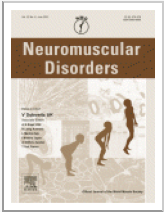 Myalgia, fatigue, and exercise intolerance are cause for referral to a neurologist. However, the diagnostic value of history, neurological examination, and ancillary investigations in patients with these symptoms is unknown.
Myalgia, fatigue, and exercise intolerance are cause for referral to a neurologist. However, the diagnostic value of history, neurological examination, and ancillary investigations in patients with these symptoms is unknown.
This study provides a sound footing for deciding which ancillary investigations should be conducted. A prospective observational study of the diagnostic approach in 187 patients with myalgia, exercise intolerance, or fatigue as their predominant symptom was 28performed. The primary outcomes were independent contribution of referral letter, history, examination, and ancillary investigations to a myopathy diagnosis. The secondary outcome was diagnostic value of combined ancillary investigations. 27% of patients had a myopathy. Positive family history (OR 3.2), progressive symptoms (OR 2.2), atrophy (OR 9.7), weakness (OR 10.9), and hyporeflexia (OR 4.4) were associated with a myopathy. Positive predictive values for myopathy were calculated for CK (0.32), EMG (0.66), ultrasound (0.47), and muscle biopsy (0.78). All contributed significantly in predicting myopathy. Multivariate analysis yielded a diagnostic algorithm facilitating a more efficient work-up in future patients. CK levels, EMG, ultrasound, and muscle biopsy independently contribute to predicting a myopathy.
The diagnostic algorithm shows which combination of ancillary investigations should be employed in different subgroups and when to omit invasive techniques.
